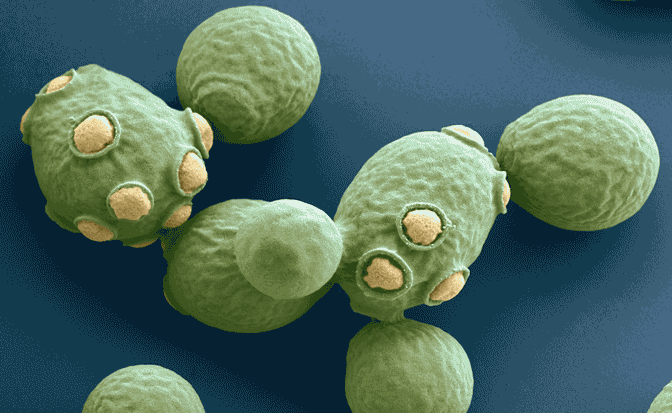
For wine’s chattering classes no subject is more captivating than the elements that make one varietally-similar wine distinguishable from another. Plant a chardonnay vine in the Sierra Foothills of California and another genetically identical vine in the commune of Meursault in Burgundy, let them mature and produce fruit and the wines that result from their respective vinifications will be readily distinguishable.
The differentiating factor in this experiment — and the pet subject of wine nerds everywhere — is said to be something called terroir. The French loan-word really just means “terrain” and it implies nothing more than that every vineyard area has a physical location which is subject to a specific set of environmental and ecological facts — things like climate, soils, elevation, the number of degree days, and the exposition (how the site is oriented toward the sun).
Today, soils are especially favored as a way of explaining the uniqueness of a site, and chances are good that you’ve heard a somm or retail clerk talk about how the slate, or schist, or marl, or chalk prevalent at a given site imparts a special character to the wine he’s telling you about. Winemakers have even begun to market their wines on the basis of the rocks that underlie their vineyards. You may have seen an example of this on our shelves in Guy Bossard’s wonderful Domaine de l’Ecu Expression de Granit and Expression d’Orthogneiss Muscadets.
Soils are a natural place for us to put our focus because they’re so very tangible. Unlike sun or wind or exposition, soils have a satisfyingly solid and are readily distinguishable from each other – just like the wines they are supposed to be able to explain.
Exactly how they do this, how a rock can communicate something of its character through wine in the form of flavor and aroma, is much less obvious. Science hasn’t yet explained it. Some researchers swear it isn’t even possible. As a result, rocks, for all their formidable solidity, may be on their way out as the dominant player and public face of terroir. If so, what will take their place?
Consider the humble but powerful micro-organisms known as yeasts.
Yeasts aren’t visible to the naked eye. Only a few micrometers across, their invisibility has always worked against their getting credit for their amazing work. Although we’ve been making fermented beverages for thousands of years (the Republic of Georgia claims to be on vintage number 8000), the process by which sugars are converted to alcohol and CO2 was determined to be the work of these tiny creatures only about 150 years ago.
In effect, these microflora have for millennia constituted a vast unacknowledged and unpaid labor force without which wine as we know it would not exist.
It’s clear than what distinguishes one wine from another is in part the work of the one-celled wonders resident at the properties where grapes are vinified. Yeasts, it seems, are an important contributor to terroir — but just how important?
Studies show that yeast populations vary dramatically not just from winery to winery but from vintage to vintage.
The answer is that half (!) of the volatile compounds that are responsible for how a wine tastes and smells are now believed to derive directly from yeast activity during fermentation. But there’s enormous variation in how yeasts behave.
Studies show that populations vary dramatically not just from winery to winery but from vintage to vintage — a fact that is consonant with the differences we notice among varietally similar wines made in diverse places or in different years. It’s the outcome you would expect if place-specific strains of yeast were acting on grapes to produce place-specific wines. By comparison, soils tend to be stable over all but the longest periods.
We don’t know as much as we would like about these single-cell mighty-mites. For example, it’s not yet clear that strains of wild saccharomyces cerevesiae, the principal wine yeast, is found in the vineyard or on grapes grown there in sufficient numbers to accomplish reliable fermentations. Some researchers believe that really effective populations are only found hanging out in wineries. If this is true, it’s easy to see how a stable, resident, self-selecting population of yeasts could establish itself inside a given cave or cantina where it would contribute in a predictable, ongoing way to the character of the wines that issues from it.
If winemakers had a choice in the matter, not every yeast would be given a work permit, though. Brettanomyces bruxellensis, for example, is a species that is particularly adept at producing what are called volatile phenols. Bretty aromas are often described as reminiscent of barnyard, smoke, or bloody bandage. These aromas that can be interesting in small doses, but when aggressive result in faulty, offensive wines. It’s one of the reasons winemakers opt for the predictable behavior of commercial cultured yeasts over feral varieties.
Similarly, recent research by enology professor Denis Dubourdieu at the University of Bordeaux has linked the production of sulfur compounds by specific yeast strains to those smoky, flinty notes that are so prized in Loire Valley sauvignon blanc — aromas we are long used to attributing to the mineral content of the soils there. Apparently there are no grounds for continuing to hold that view.
If it turns out that rocks contribute less than we once thought to wine character, it won’t be the end of the world. Soils will always do at least one thing better than anything else can: Hold vines upright.
Reach me at stephenmeuse@icloud.com